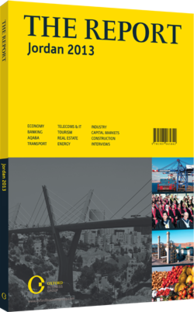OBG talks to Nemeh Sabbagh, CEO, Arab Bank

Interview: Nemeh Sabbagh
How concerned are bankers in Jordan by the rise in inflationary pressure? Does the Central Bank have the tools to manage this adequately?
NEMEH SABBAGH: Jordan has experienced fairly low inflation rates recently, with the consumer price index increas-ing at an average rate of 5% in 2010, 4.4% in 2011, and 4.8% in 2012. It is nonetheless true that the increase in the consumer price index has risen to 7.2% year-on-year in the first two months of 2013.
This increase resulted from price levels adjusting in several sectors to the impact of energy price liberali-sation, which took place in November 2012. This increase is not expected to maintain momentum, however. The Central Bank has the necessary tools to control infla-tionary pressure from building up. In particular, the Central Bank of Jordan already raised the overnight window deposit rate three times in 2012 by a cumula-tive 175 basis points, in order to control inflation and support the currency peg.
Indeed, the peg of the Jordanian dinar to the dollar has been the anchor for price and monetary stability. Pressures on the currency eased in early 2013, and for-eign reserves of the central bank have increased. The inflation rate is also expected to moderate later in 2013. The IMF’s latest World Economic Outlook report of April 2013 forecasts Jordan’s inflation rate to reach 5.9% for all of 2013, before moderating further in 2014.
What do you identify as areas of opportunity out-side the usual lending market?
SABBAGH: When assessing lending opportunities, the prevailing and expected market conditions must be taken into consideration. Though I expect the local economy to recover slowly, Jordan’s path of economic recovery will continue to be affected by regional devel-opments. I do see potential for growth on both the cor-porate and consumer banking levels. From a corporate perspective, we see growth opportunities in the small and medium-sized enterprise (SME) sector. In addition, there are opportunities in transaction banking, such as cash management solutions, in addition to structured financing and specialised banking products. On the consumer banking front, there is huge potential in more specialised banking packages that cater specifically to middle income and high-net worth customers.
Given the purchasing power of most retail cus-tomers, how can banks capitalise on the opportu-nities without over-extending credit facilities?
SABBAGH: Banks should provide loans to customers in accordance with their repayment capability. In order to capitalise on opportunities within retail, it is critical for banks to understand their customers and their financial needs. Firstly, this can lead banks to package financial services based on their target customers’ income, lifestyle and demographics.
Secondly, customers’ specific borrowing require-ments and financial capacity will dictate what loan products and what lending criteria, be they for hous-ing, auto or personal loans, banks should develop. By focusing on their customers, banks will be able to gen-erate returns not only through retail loans, but also through a host of other financial services that today’s customers have come to expect from a bank.
How important is the establishment of a credit bureau to the industry and the broader economy?
SABBAGH: The importance of establishing a credit bureau has become more apparent, with the increas-ing size of the economy and its institutions. Growth results in more diverse and complex credit risks, as the relationships between institutions and banks expands.
This system requires broad-based and comprehensive information that enables banks to make prudent deci-sions before entering into credit relationships.
A credit bureau would positively affect the local econ-omy and the banking industry, reducing the risk aris-ing from credit relations between customers and banks, through the availability of reliable information and will also allow banks to shorten the loan processing time.
You have reached the limit of premium articles you can view for free.
Choose from the options below to purchase print or digital editions of our Reports. You can also purchase a website subscription giving you unlimited access to all of our Reports online for 12 months.
If you have already purchased this Report or have a website subscription, please login to continue.

